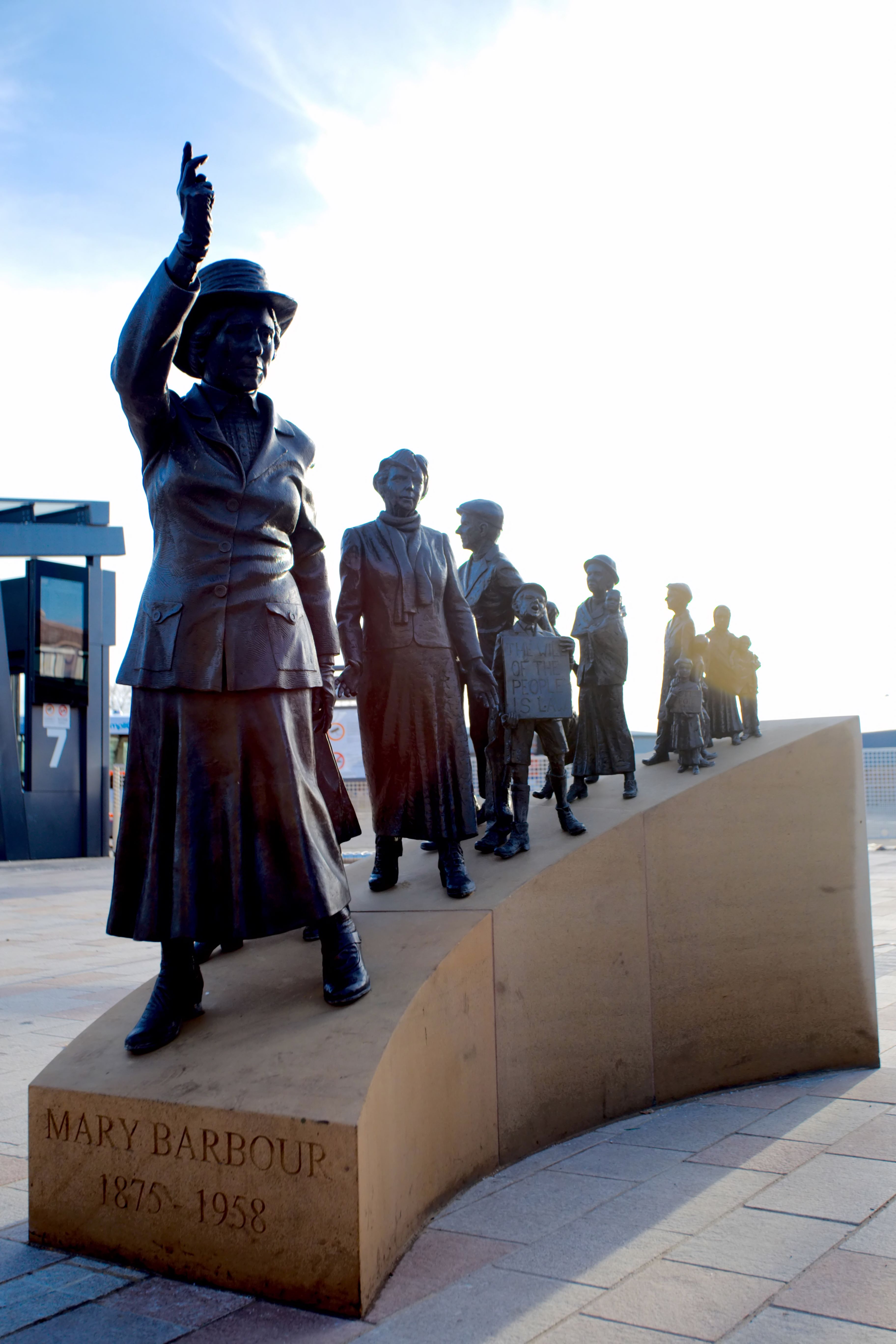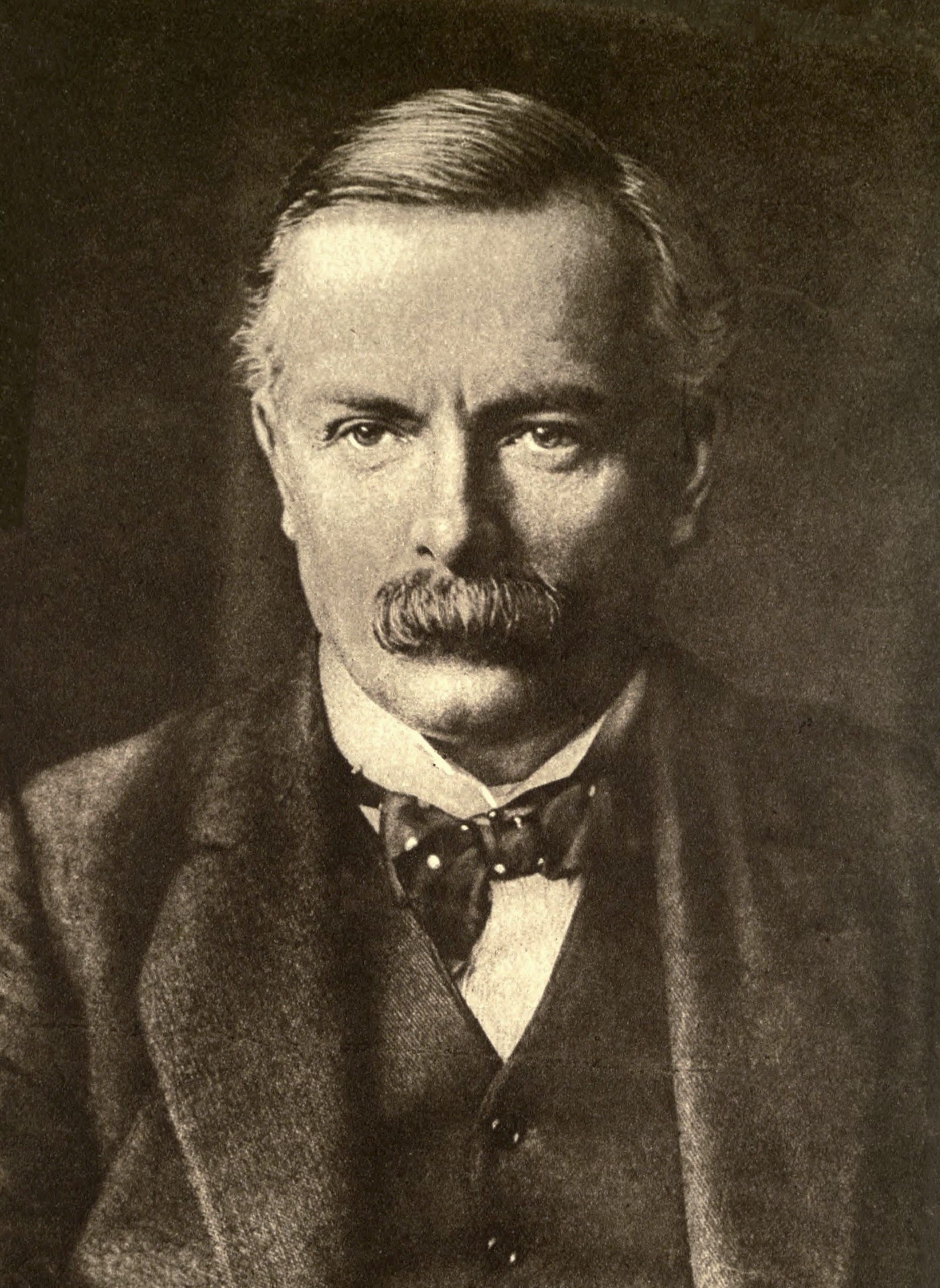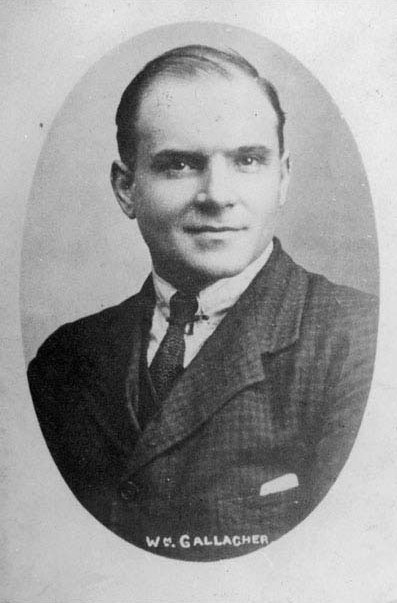|
Mary Burns Laird
Mary Laird ( Burns; died 1944) was a founding member and first President of the Glasgow Women's Housing Association, a President of the Partick Branch of the Women's Labour League, associated with the Red Clydeside movement, and supported the Glasgow Rent Strikes of 1915 alongside Mary Barbour, Agnes Dollan, Mary Jeff and Helen Crawfurd. Laird went on to participate in wider social activism for women and children's rights. Biography Mary Burns Laird was born in 1864 to Margaret Walker and Hugh Burns, who were both born in Ireland. In 1884, she married John Laird, who was a ship builder's clerk. The wedding took place in Kinning Park, Glasgow. Laird was a sewing machinist. Her father, Hugh was a Deputy Harbourmaster at the time of her marriage. In the 1891 and 1901 censuses the family lived at Edward Street, Barony and in the 1911 census at Blantyre Road, Anderston. According to the 1911 census entry Laird and her husband, John had had six children, two of whom were still li ... [...More Info...] [...Related Items...] OR: [Wikipedia] [Google] [Baidu] |
Women's Labour League
The Women's Labour League (WLL) was a pressure organisation, founded in London in 1906, to promote the political representation of women in parliament and local bodies. The idea was first suggested by Mary Macpherson, a linguist and journalist who had connections with the Amalgamated Society of Railway Servants, and was taken up by several notable socialist women, including Margaret MacDonald, Marion Phillips and Margaret Bondfield. The League's inaugural conference was held in Leicester, with representatives of branches in London, Leicester, Preston and Hull. It was affiliated to the Labour Party. Margaret MacDonald acted as the League's president, while both Margaret Bondfield and Marion Phillips served at times as its organising secretary. Much of the League's campaigning effort was devoted to the issue of women's suffrage. When the Representation of the People Act 1918 gave a partial women's franchise, the League decided to disband as an independent organisation. It became ... [...More Info...] [...Related Items...] OR: [Wikipedia] [Google] [Baidu] |
Mary Barbour Statue - Front View
Mary may refer to: People * Mary (name), a feminine given name (includes a list of people with the name) Religious contexts * New Testament people named Mary, overview article linking to many of those below * Mary, mother of Jesus, also called the Blessed Virgin Mary * Mary Magdalene, devoted follower of Jesus * Mary of Bethany, follower of Jesus, considered by Western medieval tradition to be the same person as Mary Magdalene * Mary, mother of James * Mary of Clopas, follower of Jesus * Mary, mother of John Mark * Mary of Egypt, patron saint of penitents * Mary of Rome, a New Testament woman * Mary, mother of Zechariah and sister of Moses and Aaron; mostly known by the Hebrew name: Miriam * Mary the Jewess one of the reputed founders of alchemy, referred to by Zosimus. * Mary 2.0, Roman Catholic women's movement * Maryam (surah) "Mary", 19th surah (chapter) of the Qur'an Royalty * Mary, Countess of Blois (1200–1241), daughter of Walter of Avesnes and Margaret of Blois * Mar ... [...More Info...] [...Related Items...] OR: [Wikipedia] [Google] [Baidu] |
Rosyth
Rosyth ( gd, Ros Fhìobh, "headland of Fife") is a town on the Firth of Forth, south of the centre of Dunfermline. According to the census of 2011, the town has a population of 13,440. The new town was founded as a Garden city-style suburb and naval dockyards in 1909, and was built as the coastal port of Dunfermline. Rosyth is almost contiguous with neighbouring Inverkeithing, separated only by the M90 motorway. Rosyth railway station is on the Fife Circle Line. Governance Rosyth is within the Cowdenbeath constituency of the Scottish Parliament, currently held by Annabelle Ewing of the Scottish National Party, as well as the Mid Scotland and Fife electoral region. For the UK Parliament, Rosyth is located in the Dunfermline and West Fife Westminster constituency, currently held by Douglas Chapman MP for the Scottish National Party. Rosyth has three representatives on Fife Council: Brian Goodall (Scottish National Party), Tony Jackson (Scottish National Party) and Andrew ... [...More Info...] [...Related Items...] OR: [Wikipedia] [Google] [Baidu] |
Garden City Movement
The garden city movement was a 20th century urban planning movement promoting satellite communities surrounding the central city and separated with greenbelts. These Garden Cities would contain proportionate areas of residences, industry, and agriculture. Ebenezer Howard first posited the idea in 1898 as a way to capture the primary benefits of the countryside and the city while avoiding the disadvantages presented by both. In the early 20th century, Letchworth, Brentham Garden Suburb and Welwyn Garden City were built in or near London according to Howard's concept and many other garden cities inspired by his model have since been built all over the world. History Conception Inspired by the utopian novel ''Looking Backward'' and Henry George's work ''Progress and Poverty'', Howard published the book '': a Peaceful Path to Real Reform'' in 1898 (which was reissued in 1902 as ''Garden Cities of To-morrow''). His idealised garden city would house 32,000 people on a site of , pl ... [...More Info...] [...Related Items...] OR: [Wikipedia] [Google] [Baidu] |
Minister Of Munitions
The Minister of Munitions was a British government position created during the First World War to oversee and co-ordinate the production and distribution of munitions for the war effort. The position was created in response to the Shell Crisis of 1915 when there was much newspaper criticism of the shortage of artillery shells and fear of sabotage. The Ministry was created by the Munitions of War Act 1915 passed on 2 July 1915 to safeguard the supply of artillery munitions. Under the very vigorous leadership of Liberal party politician David Lloyd George, the Ministry in its first year set up a system that dealt with labour disputes and fully mobilized Britain's capacity for a massive increase in the production of munitions. The government policy, according to historian J. A. R. Marriott, was that: : No private interest was to be permitted to obstruct the service, or imperil the safety, of the State. Trade Union regulations must be suspended; employers' profits must be limited, s ... [...More Info...] [...Related Items...] OR: [Wikipedia] [Google] [Baidu] |
Robert Munro, 1st Baron Alness
Robert Munro, 1st Baron Alness, (28 May 1868 – 6 October 1955), was a Scottish lawyer, judge and Liberal politician. He served as Secretary for Scotland between 1916 and 1922 in David Lloyd George's coalition government and as Lord Justice Clerk between 1922 and 1933. Background and education Munro was born in Alness, Ross-shire, the son of Margaret (née Sinclair), daughter of Reverend John Sinclair, and Reverend Alexender Ross Munro. He was educated at Aberdeen Grammar School and the University of Edinburgh. Legal and political career Munro was admitted to the Scottish Bar as an Advocate in 1893. He was a Counsel to the Board of Inland Revenue and became a King's Counsel in 1910. At this point he lived at 15 Heriot Row: a huge Georgian townhouse in the centre of Edinburgh. In the January 1910 general election he was elected as a Liberal Member of Parliament for Wick Burghs, holding the seat until its abolition for the 1918 election. He was then returned to the House ... [...More Info...] [...Related Items...] OR: [Wikipedia] [Google] [Baidu] |
Secretary For Scotland
The secretary of state for Scotland ( gd, Rùnaire Stàite na h-Alba; sco, Secretar o State fir Scotland), also referred to as the Scottish secretary, is a secretary of state in the Government of the United Kingdom ga, Rialtas a Shoilse gd, Riaghaltas a Mhòrachd , image = HM Government logo.svg , image_size = 220px , image2 = Royal Coat of Arms of the United Kingdom (HM Government).svg , image_size2 = 180px , caption = Royal Arms , date_es ..., with responsibility for the Scotland Office. The incumbent is a member of the Cabinet of the United Kingdom. The office holder works alongside the other Scotland Office#Ministers, Scotland Office ministers. The corresponding shadow minister is the Shadow Secretary of State for Scotland, shadow secretary of state for Scotland. The incumbent is Alister Jack, following his appointment by Prime Minister of the United Kingdom, Prime Minister Boris Johnson in July 2019 and who was reappointed by Liz Truss and Rishi Sun ... [...More Info...] [...Related Items...] OR: [Wikipedia] [Google] [Baidu] |
Hillhead
Hillhead ( sco, Hullheid, gd, Ceann a' Chnuic) is an area of Glasgow, Scotland. Situated north of Kelvingrove Park and to the south of the River Kelvin, Hillhead is at the heart of Glasgow's fashionable West End, with Byres Road forming the western border of the area, the other boundaries being Dumbarton Road to the south and the River Kelvin to the east and north. History Hillhead was an independent police burgh from 1869, but as Glasgow grew during the nineteenth century it was first swallowed up physically by the growing city, and then administratively in 1891. Landmarks The University of Glasgow is located in the area, having moved from its original site on the High Street to its current Gilmorehill location in 1870. Consequently a great number of students live in the area. Many academics from the University live in the area along with BBC Scotland employees, actors, broadcasters, writers and many students from various universities and teaching hospitals, creating an econ ... [...More Info...] [...Related Items...] OR: [Wikipedia] [Google] [Baidu] |
Glasgow Green
Glasgow Green is a park in the east end of Glasgow, Scotland, on the north bank of the River Clyde. Established in the 15th century, it is the oldest park in the city. It connects to the south via the St Andrew's Suspension Bridge. History In 1450, King James II granted the parkland to Bishop William Turnbull and the people of Glasgow. The Green then looked quite different from the Green today. It was an uneven, swampy area made up of several distinct "greens" (separated by the Camlachie and Molendinar Burns): the High Green; the Low Green; the Calton Green; and the Gallowgate Green. In the centuries that followed, the parkland was used for grazing, washing and bleaching linen, drying fishing nets, and recreational activities like swimming. In 1732, Glasgow’s first ''steamie'', called ''the Washhouse'', opened on the banks of the Camlachie Burn. From 25 December 1745 to 3 January 1746, Bonnie Prince Charlie's army camped in ''Flesher's Haugh'' (privately owned at the time, ... [...More Info...] [...Related Items...] OR: [Wikipedia] [Google] [Baidu] |
Partick
Partick ( sco, Pairtick, Scottish Gaelic: ''Partaig'') is an area of Glasgow on the north bank of the River Clyde, just across from Govan. To the west lies Whiteinch, to the east Yorkhill and Kelvingrove Park (across the River Kelvin), and to the north Broomhill, Glasgow, Broomhill, Hyndland, Dowanhill, Hillhead, areas which form part of the Glasgow#West End, West End of Glasgow. Partick was a Police burgh from 1852 until 1912 when it was incorporated into the city.Second City of The Empire: 1830s to 1914 from theglasgowstory.com. Retrieved 22 December 2011. Partick is the area of the city most connected with the Scottish Highlands, Highlands, and several Gaelic agencies, such as the Gaelic Books Council (Scottish Gaelic: ''Comhairle nan Leabhraichean'') are located in the area. [...More Info...] [...Related Items...] OR: [Wikipedia] [Google] [Baidu] |
Milngavie
Milngavie ( ; gd, Muileann-Ghaidh) is a town in East Dunbartonshire, Scotland and a suburb of Glasgow. It is on the Allander Water, at the northwestern edge of Greater Glasgow, and about from Glasgow city centre. It neighbours Bearsden. Milngavie is a commuter town, with much of its working population travelling to Glasgow to work or study. The town is served by Milngavie railway station on the North Clyde Line of the Strathclyde Passenger Transport, SPT rail network, which links it to Central Glasgow. In 2018 the Scottish Government published statistics for the town showing that the population increased to 13,537 in 6,062 households. The town is also a popular retirement location, with a high number of elderly people living there. The ''Milngavie and Bearsden Herald'', owned by Johnston Press, is a weekly newspaper that covers local events from the schools, town halls, community and government in the area. The paper was established in 1901 and is printed every Wednesday, to be ... [...More Info...] [...Related Items...] OR: [Wikipedia] [Google] [Baidu] |
Glasgow Rent Strikes 1915
Red Clydeside was the era of political radicalism in Glasgow, Scotland, and areas around the city, on the banks of the River Clyde, such as Clydebank, Greenock, Dumbarton and Paisley, from the 1910s until the early 1930s. Red Clydeside is a significant part of the history of the labour movement in Britain as a whole, and Scotland in particular. Some newspapers of the time used the term "Red Clydeside" to refer, largely derisively, to the groundswell of popular and political radicalism that had erupted in Scotland. A confluence of charismatic individuals, organised movements and socio-political forces led to Red Clydeside, which had its roots in working-class opposition to Britain's participation in the First World War, although the area had a long history of political radicalism going back to the Society of the Friends of the People and the " Radical War" of 1820. 1911 strike at Singer The 11,000 workers at the largest Singer sewing machines factory, in Clydebank, went on ... [...More Info...] [...Related Items...] OR: [Wikipedia] [Google] [Baidu] |





.jpg)
.jpg)
.jpg)
